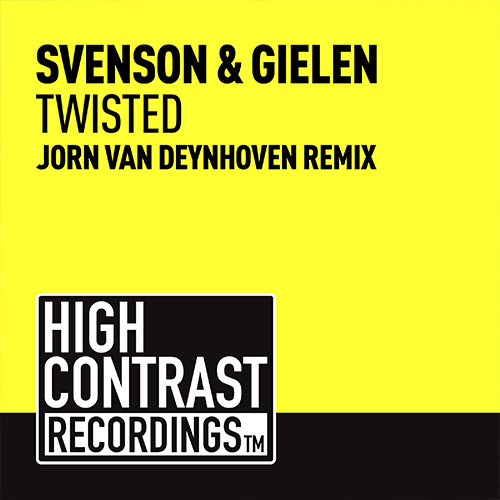|
On February 8, 2023, a routine 50-minute chapel at Asbury University turned into a 16-day event that captured attention around the world.
I streamed the service from my office that morning. After a message from the speaker, a student gospel choir closed in song. I left my computer and proceeded to my next meeting. Later, as I was preparing for lunch, my wife texted me that some students were still praying and worshiping in Hughes Auditorium.
More students came. Then more.
Over the next few weeks, what the university’s leadership described as an “outpouring” grew exponentially to an estimated 50,000 visitors who descended upon our two-stoplight town in central Kentucky. They overflowed into simulcast sites hosted at the neighboring seminary and local churches. They knelt and prayed and sang on the cold ground of our wide campus green.
Asbury has identified over 250 podcasts, 1,000 articles, and dozens of sermons and conference sessions addressing what happened. More than 100 local, national, and international media outlets visited our campus. There have been approximately 250 million social media posts related to #AsburyRevival or #AsburyRevival2023. I have never seen such a collection of men and women from all ages, backgrounds, and nationalities stirred, seeking, repentant, and unified.
Throughout it all, the internet swirled with debate over what defined a revival and whether the events at Asbury qualified as one. Comparisons were inevitably made to prior revivals at Asbury, most notably the one in 1970. These are fair discussions. Words like revival, renewal, and awakening carry nuanced theological and historical significance.
It may ultimately fall to historians to catalog the long-term consequences of the events of last February and to determine whether they were a revival or something else. For now, looking back after only a year, I believe outpouring is capacious enough to hold a variety of understandings and avoid prematurely defining what unfolded before us.
There is one thing, however, that I have come to see very clearly in the wake of those 16 days: Gen Z is emerging as a corrective to the casual Christianity that has marked our religious landscape and characterized our dechurching movement.
To understand why that is, you have to first understand some of what Gen Z has been through. In media interviews last year, I often suggested that the social, economic, and emotional burdens of our country—and the moral failures within the church itself—have been acutely felt by younger generations. “There is a hunger for something more,” I told one journalist.
I have asked students what they thought of my comments. While agreeing in spirit, one student told me he would state it differently. “We don’t want something more,” he said. “We want something less.” He was speaking to his generation’s desire for something distilled and real—an anchor amid the disorientation and dynamism of this moment.
Students are less interested in “beliefs” than in a faith that works. There is a trenchant meaning vacuum in our country fostering a sweeping spiritual hunger.
A former Iraq War medic—a nontraditional Asbury student who participated in the outpouring five times—described to me the harrowing look of desperation on a soldier’s face prior to death. “I saw a similar look on the faces of visitors,” he said.
Baylor University’s Jason Vickers writes in his book Outpouring (coauthored with Asbury Seminary theologian Tom McCall) that the long lines of people trying to enter Hughes Auditorium were reminiscent of soup lines during the Great Depression. “The connection was obvious and overwhelming,” Vickers writes. “They were hungry and thirsty for God. And they genuinely believed that God was there.”
The existence of spiritual hunger in America is perhaps obvious. But what struck me about our students was how they met that hunger. Those lines of visitors reflected an orderliness that marked the entire event. Its leaders sought order but not orchestration—and some of the most visible leaders were students, who could be found testifying, serving, and leading worship.
We have documented student visitors from 285 colleges or universities who came over the 16 days. An estimated 100 worship teams took the stage. Without being directed, they played from the side of the stage, outside the spotlight. This was consistent with a broader and unspoken sensibility to get out of the way. Prior to leading worship, teams would spend an hour in a “consecration room” that we had set aside, to pray and be prayed over. While this nonvisible space has been given scant attention, one person described it as the “nuclear reactor” of the outpouring.
I do not believe there is anything special about Asbury University or even the year 2023, in the sense that God can use any place and time to pour out his Spirit. Indeed, similar spiritual outpourings have since occurred at Samford University, Lee University, Baylor University, Texas A&M, and Auburn University.
There is, however, something special about the people. A year ago, I witnessed the best of our student community and the faculty and staff who guide them—faithful men and women with a high spiritual temperature, a holy imagination, and a willingness to exercise radical selflessness.
“Asbury is like a riverbed,” art professor Chris Segre-Lewis said during a community panel after the outpouring. “When water comes, it knows where to flow.”
This radical selflessness, together with Gen Z’s evident hunger for something unvarnished and genuine, is a sign of hope for the future of Christianity, its institutions, and the church.
Commentators have been abuzz with data from Jim Davis and Michael Graham’s 2023 book, The Great Dechurching. In the past quarter century, approximately 40 million Americans have gone from attending church regularly to attending less than once a year—a number greater than all conversions from the First Great Awakening, the Second Great Awakening, and every Billy Graham crusade combined.
Of those who have dechurched, approximately 10 million have done so under the banner of “church hurt,” departing due to things like spiritual abuse or loss of trust. Michael Graham calls these “casualty” exits. But the remaining three-quarters are “casual” exits. These are men and women who stopped attending because they moved and did not find a new congregation or because busy schedules or lifestyle changes crowded out weekly worship.
A casual exit from church is a function of a casual faith. As theologian and author Stanley Hauerwas has suggested, pockets of contemporary Christianity have become domesticated into a set of propositions that we mentally carry but that have little bearing on our day-to-day life. Casual faith produces a belief system that demands little and utters pale statements like “I believe Jesus is Lord, but that is just my personal opinion.”
I believe Gen Z is different. I am surrounded by young adults and teens with an unsated hunger, ready to “count the cost” in their commitment to Christ. There is a seriousness to Gen Z Christians, and they are dissatisfied with the institutional status quo.
Research from the Barna Group shows that Gen Z sees spiritual growth as a top priority. In general, they reject hollow words and hypocrisy and want values embodied in action. They prioritize behavior over words as a strategy for sharing faith.
This is little surprise for a generation that elevates authenticity as a core value.
In a podcast, journalist Olivia Reingold, who described herself as “not a very spiritually inclined person” and said she had never set foot in a church, closed with this remarkable statement about what happened last year at Asbury: “Regardless of what you believe, you cannot deny that there are young people out there who earnestly believe in God—and now, I think, you can say have kicked off a movement of sorts.”
I hope Reingold is on to something.
I hope a remnant will emerge out of this cohort whose steadfast commitment will radically restore a nondomesticated, exilic, and fundamentally demanding spirit of historical Christianity.
I hope they want pictures of serious and devoted saints like Sophie Scholl, Simone Weil, Dietrich Bonhoeffer, Óscar Romero, or Martin Luther King Jr.—instead of hype priests, prosperity gospel theology, celebrity culture churches, or an individualistic, therapeutic god who underwhelms and exists only to affirm our preferences.
There is ample evidence to suggest Gen Z is producing precisely these kinds of believers. Our students shaped the outpouring in small but radically countercultural ways for today’s church. They had no interest in platforming celebrity entertainers or media personalities on campus. They did not offer bios when they testified or worshiped. During prayer, many students placed their phones upon the altar. They prayed over faculty, staff, and administration—including me.
Gen Z is often described as a highly pathologized cohort. They are less religious. They are leaving the church. They are wary of institutions. They are anxious and depressed and malformed by technology and social media. You would have good reason to be skeptical that such a group holds the answer to what plagues evangelicalism today. Them?
But that question bears a striking resemblance to exchanges with Christ in Scripture. Jesus, do you know who is washing your feet? Do you know whose house you are eating at? Them?
The outpouring raised a great deal of questions for me, many of which cannot be answered now. But it has helped me see this generation in fresh ways. What if, instead of the Anxious Generation or the iGeneration, we are witnessing the rise of the Corrective Generation?
I know that some in Gen Z are weary of outsized expectations that they will clean up every mess left by their forebears (leading to another moniker, Generation Fix-It). Still, I cannot help but wonder if they will embody resilient, committed, costly faith in Jesus Christ as an antidote to the casual Christianity that has emptied church pews in recent decades.
I wonder because I have already seen it.
“Revival,” said one Asbury student, Charlie Cox, “is when dead things come to life.”
Kevin Brown is president of Asbury University in Wilmore, Kentucky.
[ This article is also available in Français. ]
Have something to add about this? See something we missed? Share your feedback here.
To unlock this article for your friends, use any of the social share buttons on our site, or simply copy the link below.
To share this article with your friends, use any of the social share buttons on our site, or simply copy the link below.
source














Post comments (0)